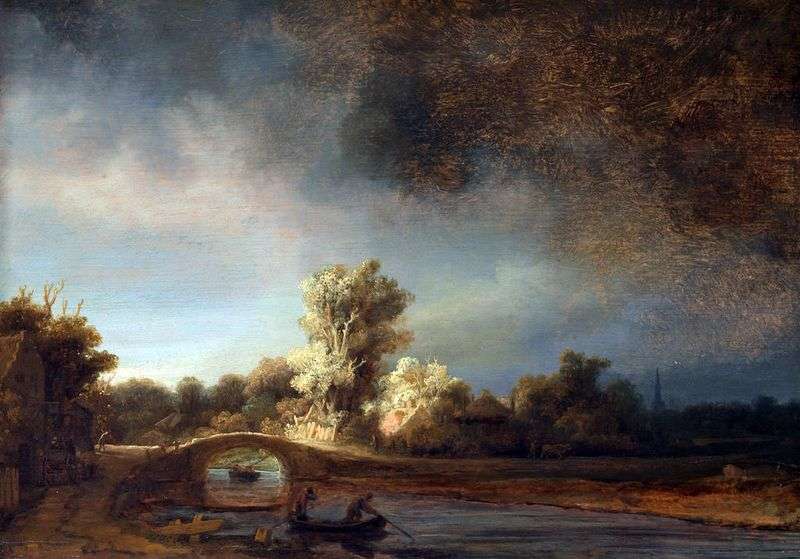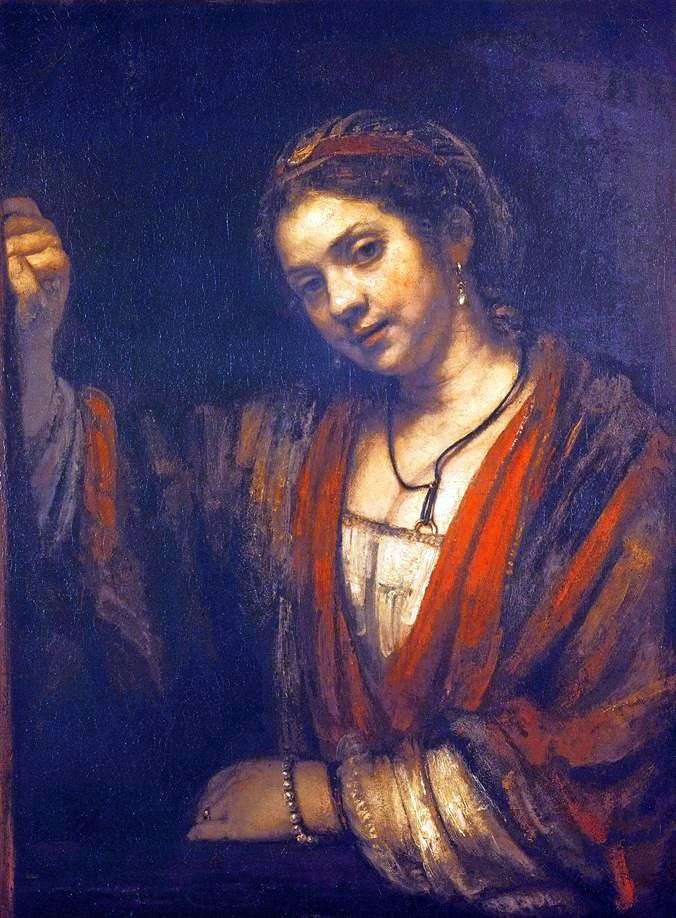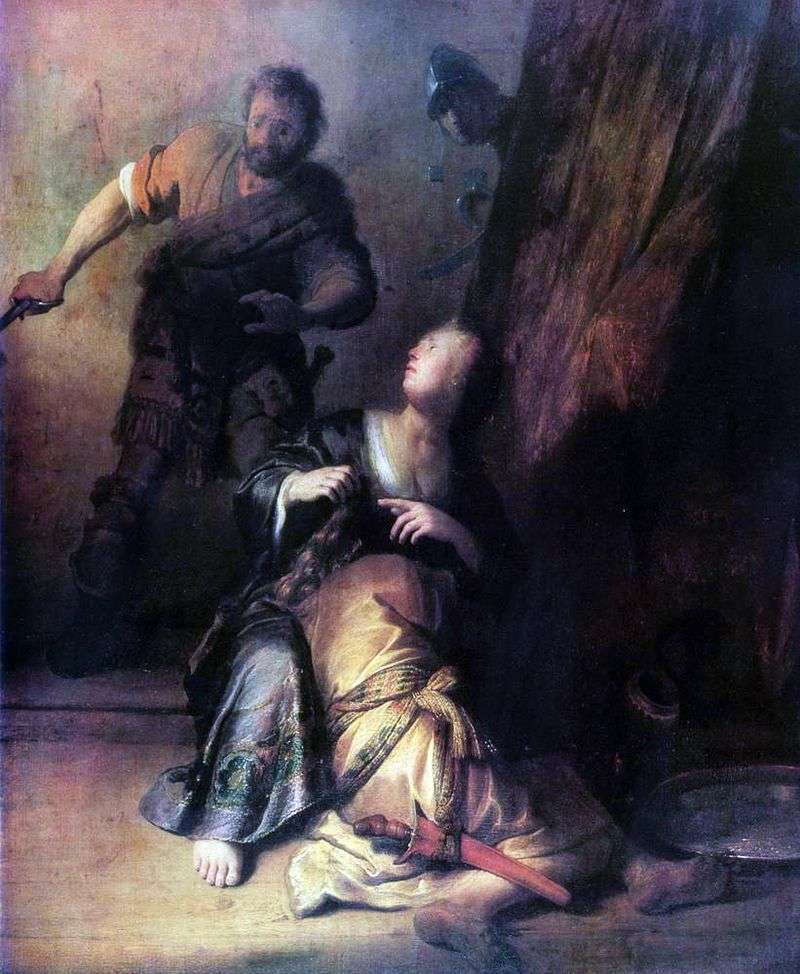
Painting by the Dutch painter Rembrandt van Rijn “The Sacrifice of Abraham”. The size of the painting is 193 x 132 cm, oil on canvas. Abraham, the Old Testament patriarch and the ancestor of the Jewish people, was born according to the Bible 2040 years before our era. Living among the pagan world, Abraham first came to know the falsity of serving idols and realized the existence of the one God, of which he became the apostle.
In old age, when his wife Sarah was 90, and Abraham was 100 years old, they had a son, Isaac, who was to become the direct heir of Abraham and continue the race of a Jewish tribe. God made a union about this with Abraham even before the birth of Isaac, establishing a circumcision rite with an external sign of this union. In order to experience the power of the faith of Abraham, the command of God to offer Isaac on Mount Moria followed him.
Abraham did not hesitate to obey, but at the most decisive moment, when Isaac lay bound on the altar and Abraham raised the knife to plunge into his son, the angel suspended him and saved the child. This feat of Abraham serves the Jews as an endless theme of memories in their prayers, and for many centuries the depiction of Isaac was in the Christian church a favorite subject for stucco and painting work of artists.
In the mid-1630s, Rembrandt wrote one after another large religious compositions, similar to the full dynamics and pathos of “The Sacrifice of Abraham”, “The Blinding of Samson”, “The Feast of Valtasar”, formal portraits. The artist is fascinated by heroic and dramatic images, externally spectacular constructions, lush fancy robes, contrasts of light and shadow, sharp angles. Rembrandt often depicts Saskia and himself, young, happy, full of strength.
However, the revolutionary Netherlands era, rejecting from time immemorial confessed the saving power of the forgiveness of sins or the newly proclaimed confidence in divine predestination, introduced many Dutchmen, including the artist Rembrandt van Rein, to faith – sprouts of doubt, to dogmatic knowledge – the desire for knowledge the new, in the sense of the constancy of life – the mutability of the world; a person can not only be good or bad, he can be both the one and the other, they leave an imprint of the contradiction of life on him, he always has to make decisions again, test himself.
With such a look, the look of Shakespeare, the look of Goethe in “Faust”, the realism of Rembrandt at the beginning of the artist’s creative path clashes with the duality of the surrounding world. And already here, in the newly opened and deeply individually perceived play of light and shadow, the ever-growing question arises: what is a man capable of?
Finally, after seven years, the graphic interests of the historical painter are moving from the venerable images of history to the victims of his modernity: in his schedule, Rembrandt naturally observes the beggars thrown into the landfill of society; The alien art of these deprived Dutch art has been described for almost two centuries, while Rembrandt, going beyond purely external curiosity, reveals in them a human form and soul.
 Portrait of an Old Woman by Rembrandt Harmens Van Rhine
Portrait of an Old Woman by Rembrandt Harmens Van Rhine Allegory of Music by Rembrandt Harmens Van Rhine
Allegory of Music by Rembrandt Harmens Van Rhine Stone Bridge by Rembrandt Harmens Van Rhine
Stone Bridge by Rembrandt Harmens Van Rhine Hendrickje by the window by Rembrandt Harmens Van Rhine
Hendrickje by the window by Rembrandt Harmens Van Rhine Portrait of an Old Man in Red by Rembrandt Harmens Van Rhine
Portrait of an Old Man in Red by Rembrandt Harmens Van Rhine Tovit suspecting his wife of stealing by Rembrandt Harmens Van Rhine
Tovit suspecting his wife of stealing by Rembrandt Harmens Van Rhine Susanna and the Elders by Rembrandt Harmens Van Rhine
Susanna and the Elders by Rembrandt Harmens Van Rhine Samson and Delilah by Rembrandt Harmens Van Rhine
Samson and Delilah by Rembrandt Harmens Van Rhine